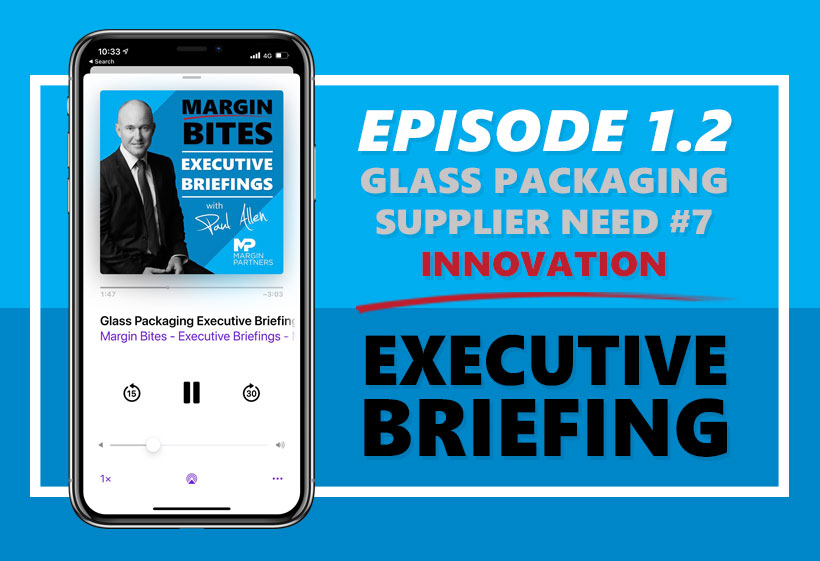SUBSCRIBE TO MARGIN BITES
Search for ‘Margin Bites’, in your favourite podcast player, or click on one of the podcast subscription services below.
SHOW NOTES
The countdown begins for revealing the top seven needs of glass suppliers. Armed with these insights, FMCG Producers can negotiate optimum buying conditions with suppliers. This episode looks at how far glass suppliers will run when you mention the word ‘Innovation’!
Hello & welcome to Episode 2 of Margin Matters – In this series we are counting down the Top 7 Glass Supplier needs. That’s right we are focusing on the needs of the Supplier. And we’re doing this so that FMCG companies can unlock the best possible prices, by giving back to the suppliers what they really value.
Let’s be clear from the outset. No Glass Supplier wants you the average FMCG customer to innovate with glass packaging. No glass supplier wants your creative marketing people to come up with an incredible new shape of glass container, in lime green or race car red. If they say they do – their probably just being nice and here this is why.
Every time a new bottle or container is requested – an extensive amount of design and development time is required to ensure the technical specifications can produce a finished item that can withstand the intensity of modern-day end user consumption. This is cost.
Next the new bottle needs moulds and I’m not talking bacteria. Moulds also cost time and money to design, manufacture, test, and fly into this country from their place of origin, overseas. More expense.
The moulds then need to be put onto the glass making machine – this takes time – the industry calls it down time or a job change. Job changes reduce glass making efficiency. The finance people get really upset with job changes and always ask – why can’t every customer just use the same bottle. Such cost. Such inconvenience.
And then there is a minimum run length – this means glass makers want the new bottle to be produced for at least 3 days so that job changes can be limited. The average glass furnace produces around 250 tonnes of glass per day, whilst the average containers weighs 200 grams. If you do the math this means a customer needs to be willing to order around 4m bottles – just to get ready. Too much cost and risk.
And then – what about colour – surely, we can have something other than boring brown, flint of antique green? Not so. A colour change is akin to hearsay at a glass factory – it’s like a job change on high octane steroids – forget it – unless you can commit to 20k tonnes per annum or 100m bottles!
So, if your wanting to really start to buy well from a glass supplier – make a commitment to them that you’ll never introduce your marketing and product development to them. In fact, tell them you don’t have marketing people. Then commit that all future product development for your regular supermarket range reviews, will focus on glitzy design innovations centred on the label, closure, or carton. Leave glass innovation alone and stock to your exiting bottle.
In our Next episode, our countdown moves to Glass Supplier Need number 6 – Product Quality.








